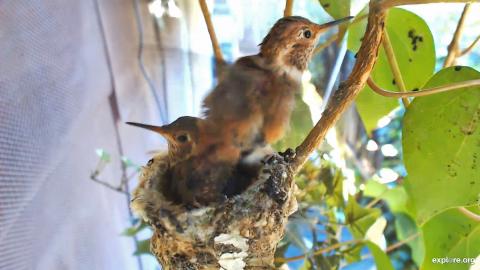Beautiful letter from Robin in Napa
Remember the importance of beavers in ecosystem
In speaking of water conservation, don’t forget our natural hydro-engineer, the beaver. Beaver dams create wetlands that provide habitat for mammals, fish, frogs, waterfowl and songbirds. These ponds lessen erosion, improve water quality and recharge aquifers. Research has shown they benefit salmon and trout, and are actually vital to restoring wild coho populations. The ponds not only help fishermen, but by raising water tables help ranchers and farmers.
The importance of beavers in the ecosystem was understood nearly 100 years ago, when they had been fur trapped out of existence in California, and Fish & Game commenced a lengthy reintroduction program. Today, many hundreds are taken by depredation permit each year, though coexistence is attainable. In Napa and Sonoma, beavers are routinely killed along creeks in Carneros. Perhaps it is time this drought-ridden state relearned an old lesson.
Robin Ellison
Great letter Robin! She even flushed out a beaver-phobe who commented that beaver droppings cause life threatening illnesses. Robin hit all the right points, and she didn’t let a boohoo drought article pass without mentioning the water-savers. I’m thrilled to think that we’ve played any kind of roll in inspiring the folks in Napa to carry the beaver torch. And to be honest, I’m reminded of how the beaver world used to treat me. Like a pleasantly surprising wildcard that cost them nothing and just added to the conversation. The first beaver conference was a fairytale. People treated me like a lucky penny and I had zero shoes to fill. There’s something to be said for anonymity were nobody expects anything from you.
(I would enjoy it now while you can.)
Speaking of which, our friends in Scotland held their first-ever beaver conference this weekend. They brought out Mike Callahan to talk flow devices, and the event was well attended. Here’s a photo:
How about an encore? Okay, I just came across Samantha Clark’s article again, which was picked up by a water blog and run under this fitting headline:
 Can Beavers Save California?
Can Beavers Save California?
Californians are crossing their fingers for more rain after three punishing years of drought have left streams, rivers and wetland parched.
One animal has the potential to restore these dry landscapes.
With their industrial buck teeth and flat tails, beavers and their dams offer a defense against drought, a solution to reversing the effects of climate change. The rodents are known as ecosystem engineers. And they once populated most of California (and the Bay Area) until fur traders nearly wiped them out in the 19th century.
“This state has lost more of its wetlands than all other states, and beavers can rebuild those wetlands,” said Rick Lanman of the Institute for Historical Ecology in Los Altos. “Knowing that it is native should help guide restoration efforts.”
Beaver dams bestow benefits to the environment that we humans can’t easily copy. They turn land into a sponge for water. Their gnawing and nesting promotes richer soil and slows down water, improving imperiled fish habitat. Their dams raise water tables, nourishing shrubbery alongside streams that stabilize eroding banks and add habitat for birds and deer. They also help the endangered California Red-legged frog.
Ahh I love that article. If you missed the original, go read it now. There are even some late-breaking quotes from Heidi Perryman about those crazy Martinez beavers. Sadly there is NO mention of a flow device to control flooding or how we managed to coexist with beavers in an urban creek. The paragraph at the end is about how destructive beavers are. But it’s a good article if you just don’t read the last part. And it’s nice to see it living on at the Pure Water Gazette.
Finally a great retelling of osage myth from Ted Stillwell in Missouri
The Beaver and the Crow
 I was talking to a longtime friend, who is Osage Indian, recently and was telling him about a pet crow I spent the summer with when I was about 8 out on the farm. For some reason he couldn’t fly, but Crow and I became great friends and had a lot of fun together. My friend frowned and said, “Be leery of crows, as they are mischief makers. Then he related an old Indian legend to me, which I would like to share.
I was talking to a longtime friend, who is Osage Indian, recently and was telling him about a pet crow I spent the summer with when I was about 8 out on the farm. For some reason he couldn’t fly, but Crow and I became great friends and had a lot of fun together. My friend frowned and said, “Be leery of crows, as they are mischief makers. Then he related an old Indian legend to me, which I would like to share.
Beaver had his home in a clear, fresh, spring water lake. The waters were cool and deep – just right for Beaver, and Beaver was happy. Because he was happy, he was content and had no other wish than to have his snug round house upon the lake forever.
Crow also lived in the land of the clear, fresh water lake. Crow was a jealous person and it made him very angry to see Beaver so content. Crow was a mischief maker and where there was peace, Crow came to bring trouble. And so, Beaver attracted his notice and became a mark for his displeasure.
Go read the rest of their fun story here and take time to enjoy some older beaver wisdom. I have to go now and watch my hummingbirds. They are going to fledge any minute!










































